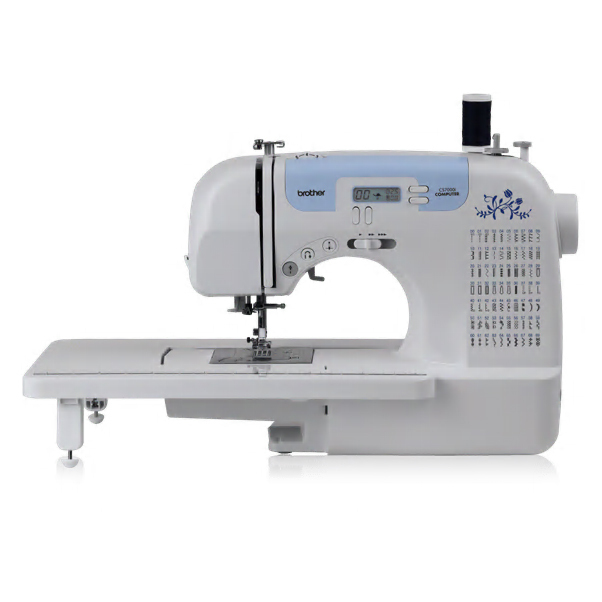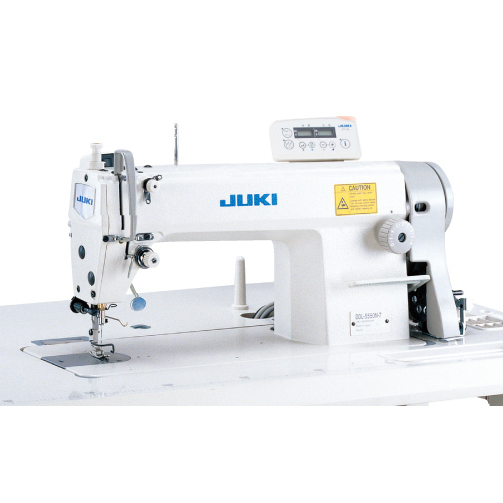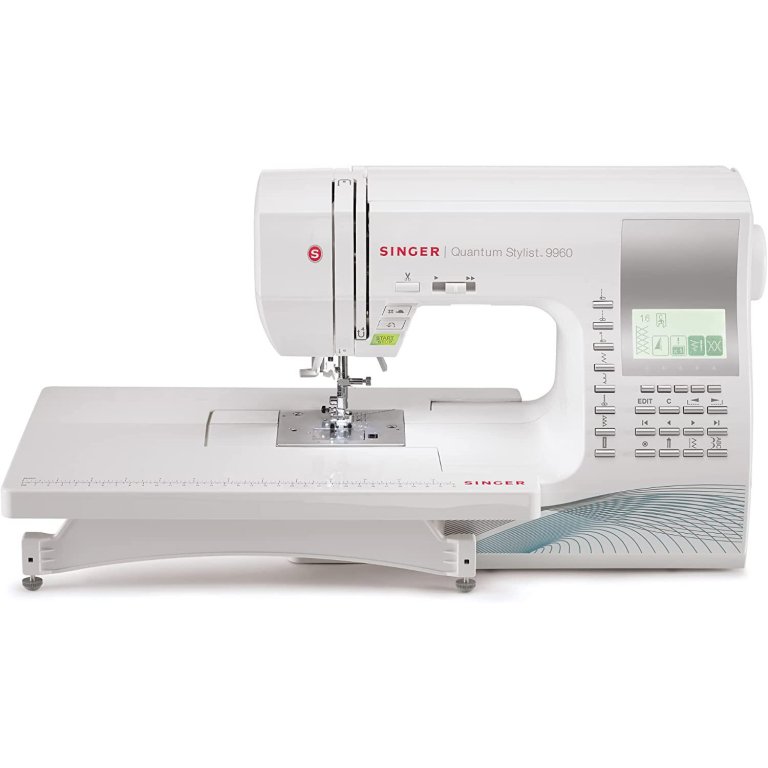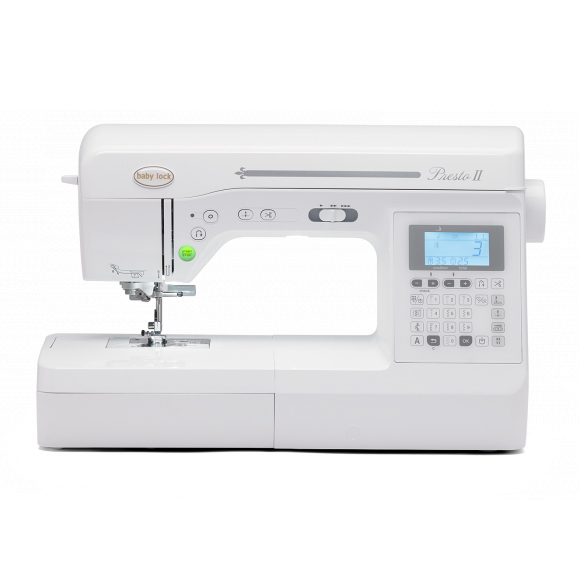We may earn revenue from the products available on this page and participate in affiliate programs.
Reading up on Domino’s shopping guides is like having your own personal product concierge. We do the tedious part—deep-dive research, hands-on testing, and tapping experts for advice—so all you have to do is hit “add to cart.” That’s why we call them Simply the Best.
When it comes to creative hobbies, sewing—whether making clothes or housewares—is easily one of the most intimidating. A sewing machine, for example, which can make or break a project, can be an expensive, overwhelming purchase for new sewists (an increasingly popular term in the sewing community), and the price range (from a few hundred dollars into the thousands) is about as wide as the range of tools different machines provide. Plus with sewing machine sales skyrocketing since the start of the pandemic, the market is becoming more crowded.
But never fear: We chatted with Porfiria Gomez, a New York–based quilter, to gather her advice on the best sewing machines, from entry-level models for those who have never used one to more advanced products for those on the verge of starting their own Etsy store. “When you’re a beginner, you don’t want to spend thousands and thousands of dollars on a brand-new machine,” says Gomez. “But you do want to invest in one that is going to stay with you for a little while.”
Here’s our list of the best sewing machines out there for making design-forward curtains, pillows, upholstery, tablecloths, you name it.
- Best overall: Brother CS7000l
- Best beginner: Bernette Sew and Go
- Best heavy-duty: Janome HD-1000
- Best industrial: Juki DDL-555
- Best multiuse: Singer Quantum Stylist 9960
- Best splurge: Baby Lock Presto II
Best Overall: Brother CS7000l
Best Overall
Shop NowComputerized | Stitch types: 70 | Price: $
What we like:
- A wide range of stitch options that include decorative, heirloom, and quilting
- A fast 850 stitches per minute
- 30-day return policy and 25-year limited warranty
Worth noting:
- No advanced features like built-in digital memory or an automatic thread cutter
- Sometimes difficult to find the right sewing tension, especially for beginners
Why we chose it: This high-functioning machine provides a lot of bang for your buck, with enough extra features to attract a range of sewists.
This is one of Brother’s best-selling machines for a reason. It’s easy to use for a beginner (for example, the digital display includes an explanation when errors occur), but it also offers a wide range of sewing options for more experienced sewers. The 10 accessory feet (including for spring-action quilting, monogramming, overcasting, and walking) facilitate a range of sewing projects. Plus there’s a wide table that can be attached for large-scale projects, as well as a hard case for travel.
For those who are less comfortable with a machine, this model makes things easier with an automatic needle threader, a drop-in top bobbin to prevent jamming, and adjustable stitch speed. Guides on how to use the machine are clear, and there’s free customer support, too.
Best Beginner: Bernette Sew and Go
Best Beginner
Shop NowMechanical | Stitch types: 10 | Price: $
What we like:
- Easy to use to get comfortable with sewing
- Portable and lightweight; perfect to take to a sewing class
Worth noting:
- Very limited number of stitches and functionalities
- Despite being easy to transport, it only comes with a soft dust cover
Why we chose it: A great first purchase; this machine won’t intimidate a beginner.
Just like biking, when you start sewing, it’s sometimes easier to begin with the training wheels on. There are a lot of cheap machines offering very basic functions, but this Bernette (owned by the premium sewing machine brand Bernina) doesn’t compromise quality despite its simplicity. It’s a great tool for getting familiar with sewing basics without getting overwhelmed or discouraged by a challenging machine.
The mechanical machine provides 10 basic stitches, complemented by four presser feet (including options for zippers and buttons). While the potential projects that can be made with this machine might be more limited, the strong straight and zigzag stitches mean it works great for tablecloths, pillowcases, and napkins.
Best Heavy-Duty: Janome HD-1000
Best Heavy-Duty
Shop NowMechanical | Stitch types: 14 | Price: $$
What we like:
- Built to last and handle the most difficult materials
- Sleek black style that comes with a hard case
Worth noting:
- A limited number of stitching options
- Heavier than other machines, so more difficult to transport
Why we chose it: This workhouse is meant to handle your most demanding projects, and the stylish black frame doesn’t hurt.
This Janome machine may look intimidating, but it’s made to handle the thick fabrics used in design projects for furniture, curtains, linens, and more. In particular, its Ultra Glide foot is made with a special resin that eases sewing fabrics that otherwise might stick, like leather, plastic, suede, and vinyl. It also comes with specialized leather needles.
The sturdiness of the die-cast aluminum machine extends to the metal chrome plate, which is easy to clean and service when needed. And while many beginners shy from working with “difficult” fabrics, this machine is actually an approachable option, especially given the easy threading and front-loading bobbin system.
Best Industrial: Juki LZ-2290A
Best Industrial
Shop NowComputerized | Stitch types: 20 | Price: $$$$
What we like:
- Has the world’s fastest stitching speed at 5,000 stitches per minute
- Unique stitch patterns can be made on the machine and stored
- The hook-driving shaft-offset mechanism eliminates stitch skipping and thread breakage
Worth noting:
- Lacks precision of other machines that are focused more on garments
- More limited stitching options
- Requires more space and is not portable
Why we chose it: An industrial sewing machine made with the highest-quality material for near constant use. It’s built to handle almost any fabric out there.
With an industrial machine, you might as well be working in a sewing atelier, as it comes as part of its own table. And while Juki also makes home sewing machines, it’s best known for its industrial models: The machine you’re buying to sew a chair cover might also be used to make upholstery for the automotive industry.
This computerized machine comes with 20 zigzag stitches but also sews one of the best straight stitches out there. It doesn’t have as many functionalities as a home sewing machine, but what it can do it does perfectly, from a standard zigzag (great for finishing off fabric edges) to scallop stitching to blind stitching (where you can’t see the stitches). With a stepping motor, the machine is record fast, at a whopping 5,000 stitches per minute. For this model, Juki has increased the arm space (giving more space for fabric) and also designed a more rigid head frame that reduces noise and vibrations.
Best Multiuse: Singer Quantum Stylist 9960
Best Multi Use
Shop NowComputerized | Stitch types: 600 | Price: $$
What we like:
- A full 1,172 stitch applications (specific sewing techniques) that includes letters
- Includes online owner’s class to learn machine basics
- Comes with extension arm
Worth noting:
- The number of features might not be needed for all sewers
- A knowledge of machines is required to get the most out of this model
- A bit too bulky and heavy to be portable
Why we chose it: This machine can do it all, and do it all pretty well, catering to a range of sewing needs.
With 600 types of stitches, 15 button designs, and five embroidery fonts, it’s clear why this is one of Singer’s most popular machines. Put simply, it allows complete customization for a sewer who knows what they want to do. The 25 needle positions, speed control slider, and option to end with the needle in the up or down position allows the user to have complete control over their sewing process. This level of precision across so many types of sewing is a strong selling point: Just imagine the possibilities of mixing decorative stitches with embroidered letters on your next project.
While it might seem difficult to keep track of so many stitch types, the well-organized touch screen makes it easy to search for stitches and even remember your most used ones. There’s also a cool mirror-image utility that allows you to reverse a stitch pattern from one side to the other. Other features include an extra-large extension table and a drop feed for free motion sewing, particularly handy for quilting.
Best Splurge: Baby Lock Presto II
Best Splurge
Shop NowComputerized | Stitch types: 100 | Price: $$$$
What we like:
- 100 built-in stitches (including 69 utility stitches) and 4 built-in alphabets
- 850 stitches per minute
- Quick-loading bobbin and needle threader
Worth noting:
- Compatible accessories are higher quality and therefore more expensive
- The number of features might be intimidating to a beginner
- Can be more difficult to find compared to other sewing machines
Why we chose it: Baby Lock might just be the Tesla of sewing machines, known for sergers and sewing machines that provide professional-level quality.
For the experienced sewer looking to really up their game (and even produce products impressive enough to sell), a Baby Lock machine is a great investment. You might just feel like you’re driving a luxury car when using this machine, which features a computerized LCD screen, push buttons, and an automatic thread cutter.
Baby Lock, which began by making more compact sergers in the 1960s, produces its machines in the same factories as Brother and Janome, but compared to cheaper models by these other brands, Baby Lock machines often function better and are built to last. But because they’re only sold through specialty dealers, they might be harder to find and therefore more difficult to test before buying.
How We Chose These Products
There are about as many sewing machines out there as there are potential projects to make. For this guide, we highlighted the best of the various types of machines currently on the market, all tried and tested by both industry professionals and amateur home sewers. Each brand is well known in the sewing industry for its high-quality machines designed to stand the test of time. We also looked for products that offer warranties and return policies if you’re unsatisfied.
Our Shopping Checklist
Just like test-driving a new car, using a machine in person before you buy is crucial to knowing if it’s the right fit for you. Many craft stores (both chains and smaller shops) allow you to try their machines. Here are a few things to keep in mind while you take a sewing machine for a trial run: Do you feel comfortable with the speed of the pedal? Can it handle the types of fabric, thread, and other materials you plan on using? Are you satisfied with the result for the type of sewing you want to do? (Just because a machine has a particular stitch or foot doesn’t mean it does it well.)
Machine Type
Three types of machines are highlighted in this story, in order of increasing robustness: home sewing machines, heavy-duty machines, and industrial machines. One of the main differences between a sewing machine focused on sewing garments versus design projects is the label “heavy duty.” Often with metal frames and more powerful motors, heavy-duty machines are better at handling thicker materials, like upholstery fabric. There is also a difference between home models and so-called industrial machines. The latter are designed for professional sewers and often take up more space, with parts made to withstand more intensive sewing. That being said, some of these machines might be less adapted to other types of sewing, most notably the precision required of garment construction.
One other important distinction is the difference between mechanical machines (which use knobs to adjust settings) and computerized machines (with a screen and buttons). One isn’t necessarily better than the other, but it’s an important difference to keep in mind. Experienced sewers often own multiple machines for different needs (like embroidery machines and sergers, which produce an overlocking stitch to prevent fabric edges from fraying).
Stitches
Sewing machines can create hundreds of types of stitches, but especially for home DIY projects, it’s important that your machine can master a couple of specific varieties. A straight stitch is exactly what it sounds like: one that goes in a single-stitch line and is used to sew two pieces of fabric together. Zigzag stitches go in a back-and-forth direction and are most commonly used with stretch fabrics as well as to finish the edge of a piece of fabric to prevent fraying.
From there, the world is your oyster, from satin stitches (used to finish edges and for monogramming) to button stitches (for buttonholes). Machines also range in the length of stitches they can create (from about 0 to 4mm, with an average length of 2 to 2.5mm), which varies for both functional and stylistic purposes. For example, long stitches are used to gather fabric.
Extra Features
Most machines come with a range of feet that facilitate these different types of stitches. In addition to a universal foot for straight-stitch sewing, these include zipper and button feet, zigzag feet, overlock feet (to do a finishing stitch), and embroidery feet. One foot that is particularly useful for home decor is a walking foot, which is used for quilts and thick materials like leather and Lycra because its up-and-down motion prevents it from sticking to the fabric. Darning feet (used to repair rips) can also be useful for free-motion quilting, allowing you to control the movement of the needle. Some machines (including the Singer Quantum Stylist 9960) also come with an extension table, which is handy when working with bulky fabrics.
Ask Domino
Anywhere you can test a machine, such as your local craft store, is a good place to buy a machine, says Gomez. She attends quilt conventions to learn about the latest models. The used sewing machine market is also bustling and a great opportunity to save some money, especially if you feel comfortable enough with sewing to work with a secondhand machine. Facebook groups and other online marketplaces are great sources for finding a high-quality machine that’s gathering dust in someone’s attic. If you get a used machine serviced (aka oiled up, cleaned out, and any mechanisms reset), it can be as good as new.
Gomez suggests focusing on what you hope to accomplish with the machine and looking for products that support those skills. For example, as a quilt maker, she wants a heavy-duty machine that can piece together thick fabrics as well as provide high-quality topstitching (the stitches that you see when you “quilt” the layers together). In contrast, someone wanting to make clothes or other precision items might look for a machine that better handles things like setting (sewing in) sleeves or adding invisible zippers and pesky buttonholes. As Gomez says, “Different sewing machines support what may work for your designs in that moment.”
The Last Word
It can be easy to get intimidated by all the sewing machines out there—and all the bells and whistles each one offers. But beginners especially should focus on a machine that excels at the fundamentals and can help take them to the next crafting level. “Especially during the pandemic, everybody was a little confused, like what is the best of the best?” says Gomez. “It’s not in the sewing machine necessarily. It’s in your hands and what you’re creating.”






